“There must be more to life than having everything!” Maurice Sendak’s words reflect a deep understanding of the human condition—recognizing that material wealth and external success are not synonymous with true fulfillment. Sendak, the celebrated author and illustrator, is best known for his iconic work Where the Wild Things Are, a story taping into the complexities of childhood emotions and the darker aspects of human experience. His work is a testament to the power of writing, not just as a form of storytelling but as a profound exploration of the human soul.
Profound challenges marked Maurice Sendak’s early life. Born in 1928 to Polish Jewish immigrants in Brooklyn, New York, Sendak grew up in a household shadowed by the horrors of the Holocaust, which claimed many of his relatives. This trauma had a lasting impact on Sendak, who often grappled with feelings of fear and alienation. As a sickly child, he spent much of his time indoors, where his imagination became his refuge. It was during these early years that Sendak discovered the power of storytelling. His experiences of fear and loss profoundly influenced his work, allowing him to create stories that resonated with children and adults alike, capturing the complex emotions that often go unspoken.
One pivotal relationship in Sendak’s life was with Ursula Nordstrom, his editor at Harper & Row. Nordstrom recognized Sendak’s unique voice and encouraged him to embrace his storytelling’s darker, more complex aspects. This partnership was crucial in creating Where the Wild Things Are, a book that broke away from the idyllic portrayal of childhood found in many children’s books at the time. Nordstrom’s support allowed Sendak to push boundaries and explore themes of anger, fear, and rebellion in an honest and groundbreaking way. The success of Where the Wild Things Are marked a turning point in Sendak’s career, solidifying his reputation as a pioneering force in children’s literature.
Maurice Sendak’s works have profoundly impacted societal norms, particularly in how children’s literature is perceived. Where the Wild Things Are, published in 1963, was initially controversial for portraying a child’s unruly emotions. However, it quickly became a classic, praised for its realistic depiction of childhood and psychological depth. Sendak’s willingness to address the fears, frustrations, and complexities of being a child challenged the conventional wisdom of his time, which often sought to protect children from the darker aspects of life. His work paved the way for a more honest and open approach to children’s literature, which acknowledges the full range of human emotions.
Maurice Sendak’s legacy extends far beyond his most famous book. His fearless exploration of the darker sides of human experience in works like In the Night Kitchen and Outside Over There has left an indelible mark on literature and society. Sendak’s stories continue to resonate with readers of all ages, reminding us that writing has the power to explore the deepest corners of our psyche and connect us with humanity’s shared experiences. For aspiring writers, Sendak’s career is a powerful reminder that the most impactful stories often confront the truth of our emotions, no matter how unsettling they may be.
Explore the rich, emotional landscapes that Maurice Sendak has created in his works. Let his fearless approach to storytelling inspire you to embrace the complexities of life in your writing and use the power of words to make a difference in the world.
We Don’t Want to Write the Laws; We Want to Publish the Books
Publication Consultants: The Synonym for Book Publishing—https://publicationconsultants.com




 This is Publication Consultants’ motivation for constantly striving to assist authors sell and market their books. Author Campaign Method (ACM) of sales and marketing is Publication Consultants’ plan to accomplish this so that our authors’ books have a reasonable opportunity for success. We know the difference between motion and direction. ACM is direction! ACM is the process for authorpreneurs who are serious about bringing their books to market. ACM is a boon for them.
This is Publication Consultants’ motivation for constantly striving to assist authors sell and market their books. Author Campaign Method (ACM) of sales and marketing is Publication Consultants’ plan to accomplish this so that our authors’ books have a reasonable opportunity for success. We know the difference between motion and direction. ACM is direction! ACM is the process for authorpreneurs who are serious about bringing their books to market. ACM is a boon for them. Release Party
Release Party Web Presence
Web Presence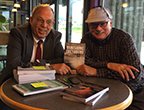 Book Signings
Book Signings Facebook Profile and Facebook Page
Facebook Profile and Facebook Page Active Social Media Participation
Active Social Media Participation Ebook Cards
Ebook Cards The Great Alaska Book Fair: October 8, 2016
The Great Alaska Book Fair: October 8, 2016


 Costco Book Signings
Costco Book Signings eBook Cards
eBook Cards

 Benjamin Franklin Award
Benjamin Franklin Award Jim Misko Book Signing at Barnes and Noble
Jim Misko Book Signing at Barnes and Noble
 Cortex is for serious authors and will probably not be of interest to hobbyists. We recorded our Cortex training and information meeting. If you’re a serious author, and did not attend the meeting, and would like to review the training information, kindly let us know. Authors are required to have a Facebook author page to use Cortex.
Cortex is for serious authors and will probably not be of interest to hobbyists. We recorded our Cortex training and information meeting. If you’re a serious author, and did not attend the meeting, and would like to review the training information, kindly let us know. Authors are required to have a Facebook author page to use Cortex. Correction:
Correction: This is Publication Consultants’ motivation for constantly striving to assist authors sell and market their books. ACM is Publication Consultants’ plan to accomplish this so that our authors’ books have a reasonable opportunity for success. We know the difference between motion and direction. ACM is direction! ACM is the process for authors who are serious about bringing their books to market. ACM is a boon for serious authors, but a burden for hobbyist. We don’t recommend ACM for hobbyists.
This is Publication Consultants’ motivation for constantly striving to assist authors sell and market their books. ACM is Publication Consultants’ plan to accomplish this so that our authors’ books have a reasonable opportunity for success. We know the difference between motion and direction. ACM is direction! ACM is the process for authors who are serious about bringing their books to market. ACM is a boon for serious authors, but a burden for hobbyist. We don’t recommend ACM for hobbyists.

 We’re the only publisher we know of that provides authors with book signing opportunities. Book signing are appropriate for hobbyist and essential for serious authors. To schedule a book signing kindly go to our website, <
We’re the only publisher we know of that provides authors with book signing opportunities. Book signing are appropriate for hobbyist and essential for serious authors. To schedule a book signing kindly go to our website, < We hear authors complain about all the personal stuff on Facebook. Most of these complaints are because the author doesn’t understand the difference difference between a Facebook profile and a Facebook page. Simply put, a profile is for personal things for friends and family; a page is for business. If your book is just a hobby, then it’s fine to have only a Facebook profile and make your posts for friends and family; however, if you’re serious about your writing, and it’s a business with you, or you want it to be business, then you need a Facebook page as an author. It’s simple to tell if it’s a page or a profile. A profile shows how many friends and a page shows how many likes. Here’s a link <> to a straight forward description on how to set up your author Facebook page.
We hear authors complain about all the personal stuff on Facebook. Most of these complaints are because the author doesn’t understand the difference difference between a Facebook profile and a Facebook page. Simply put, a profile is for personal things for friends and family; a page is for business. If your book is just a hobby, then it’s fine to have only a Facebook profile and make your posts for friends and family; however, if you’re serious about your writing, and it’s a business with you, or you want it to be business, then you need a Facebook page as an author. It’s simple to tell if it’s a page or a profile. A profile shows how many friends and a page shows how many likes. Here’s a link <> to a straight forward description on how to set up your author Facebook page.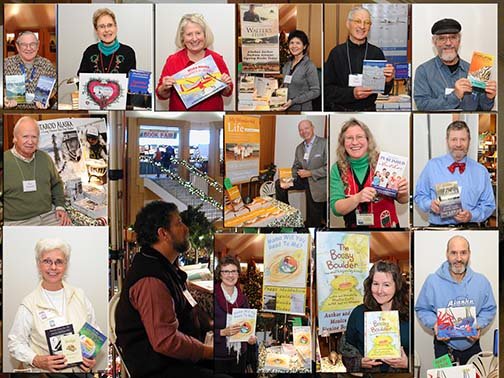



 Mosquito Books has a new location in the Anchorage international airport and is available for signings with 21 days notice. Jim Misko had a signing there yesterday. His signing report included these words, “Had the best day ever at the airport . . ..”
Mosquito Books has a new location in the Anchorage international airport and is available for signings with 21 days notice. Jim Misko had a signing there yesterday. His signing report included these words, “Had the best day ever at the airport . . ..”


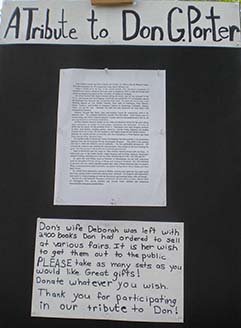
 The Lyin Kings: The Wannabe World Leaders
The Lyin Kings: The Wannabe World Leaders
 Time and Tide
Time and Tide


 ReadAlaska 2014
ReadAlaska 2014 Readerlink and Book Signings
Readerlink and Book Signings
 2014 Independent Publisher Book Awards Results
2014 Independent Publisher Book Awards Results
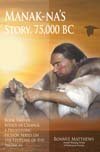
 Bonnye Matthews Radio Interview
Bonnye Matthews Radio Interview
 Rick Mystrom Radio Interview
Rick Mystrom Radio Interview When he published those overseas blogs as the book The Innocents Abroad, it would become a hit. But you couldn’t find it in bookstores.
When he published those overseas blogs as the book The Innocents Abroad, it would become a hit. But you couldn’t find it in bookstores.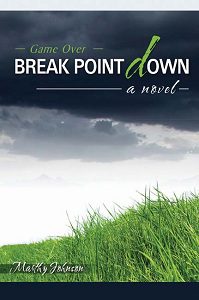 More NetGalley
More NetGalley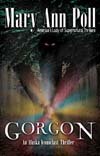 Mary Ann Poll
Mary Ann Poll
 Bumppo
Bumppo
 Computer Spell Checkers
Computer Spell Checkers Seven Things I Learned From a Foreign Email
Seven Things I Learned From a Foreign Email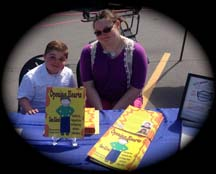 2014 Spirit of Youth Awards
2014 Spirit of Youth Awards Book Signings
Book Signings

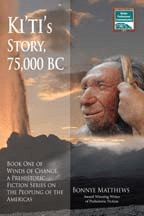
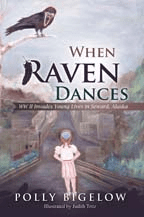 Blog Talk Radio
Blog Talk Radio Publication Consultants Blog
Publication Consultants Blog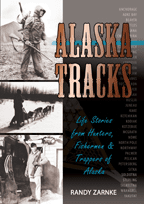 Book Signings
Book Signings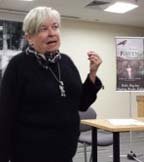

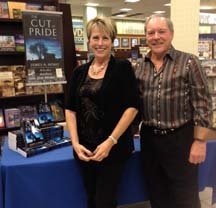

 Don and Lanna Langdok
Don and Lanna Langdok Ron Walden
Ron Walden Book Signings Are Fun
Book Signings Are Fun Release Party Video
Release Party Video
 Erin’s book,
Erin’s book,  Heather’s book,
Heather’s book,  New Books
New Books